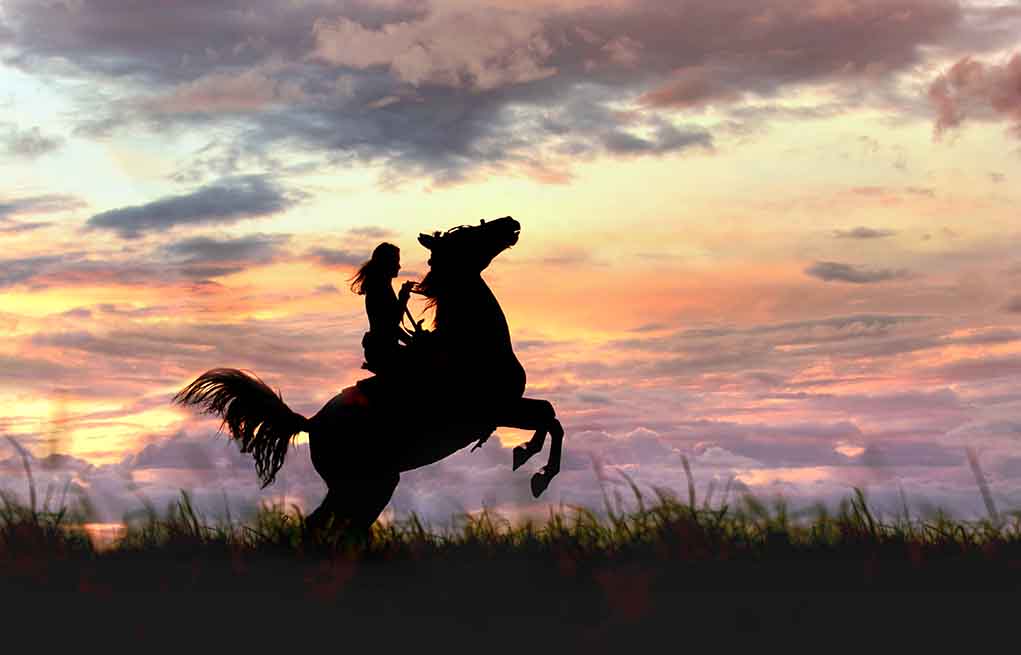
Heroes come in all shapes and sizes, and some of the smallest in stature can prove to have the greatest courage. Most Americans are familiar with the iconic midnight ride of Paul Revere, which tipped off Patriots in Lexington, MA, about British plans to storm the town and arrest Samuel Adams and John Hancock. People are less likely to know the far more harrowing story of Sybil Ludington, a largely unsung hero in the victory at the Battle of Ridgefield.
Making of a Hero
Sybil Ludington was born in Fredericksburg, NY, on April 5, 1761, to Abigail and Colonel Henry Ludington. She had 11 younger siblings. Her father, an ex-British military officer, had joined the Patriots during the American Revolution and was the commander in his local county militia when the British took nearby Danbury, CT, on April 26, 1777.
Upon receiving the news, Colonel Ludington scrambled to gather his troops; about 400 had returned to their farms and homes all along the countryside to wait for further notice. The colonel needed to remain to organize the men he had — but 2000 British soldiers were on their way, the rider who’d warned them was too tired to continue, and they faced near-certain defeat without the help of the rest of their forces.
Ludington’s Harrowing Ride
Sybil Ludington, only 16 years old at the time, offered to take on the task of amassing the rest of the men. Armed with only a stick, the teen jumped onto the back of her horse, Star, and rode into the night. Travel was treacherous, with heavy rainfall and dark forests affecting visibility. British troops and ruthless outlaws scattered throughout the region compounded the danger.
Sources offer varying renditions of her journey along the way. Some say she had to fight off an outlaw at one point. Others state a friendly male who’d wanted to ride by her side approached her, but she sent him in a different direction to warn Brewster’s militia instead.
Ludington rode 40 miles — over twice the length of Paul Revere’s midnight journey — alerting Patriots in Kent, Mahopac and Stormville with the same warning: “The British are burning Danbury. Muster at Ludington’s at daybreak!”
By dawn, nearly the entire regiment had amassed at Colonel Ludington’s home in Fredericksburg, ready to defend the town. The young woman’s actions likely helped contribute to the Patriots’ victory at the Battle of Ridgefield.
Quiet Legacy
General George Washington recognized Ludington’s bravery. Alexander Hamilton also lauded the expedition. In his memoir, Colonel Ludington likened his daughter to Paul Revere, saying the comparison between the two was no exaggeration, and her errand was no less important.
Ludington married a farmer and innkeeper named Edmond Ogden at age 23. The couple named their only child Henry, likely in honor of Colonel Henry Ludington. With his mother’s help, Henry Ogden became a lawyer and, eventually, an elected member of New York’s State Assembly. Ludington was unfortunate enough to outlive her son by one year; she died at 77 in 1839.
The New York State Education Department commemorated the brave woman in the 1930s by posting marker signs along her assumed route. In 1940, artist Anna Hyatt Huntington erected a statue of the teen on her horse in nearby Carmel. Ludington’s image also appeared on a postage stamp in 1975, making her the 35th female to receive USPS commemoration.
Despite successfully pulling off a feat many would argue was even more impressive than Revere’s iconic ride, Sybil Ludington’s name remains relatively absent from history books. Still, she was and is a true hero who played a vital role in the forging of the United States. It’s up to current and future generations to give her the credit she deserves and keep her memory alive.












